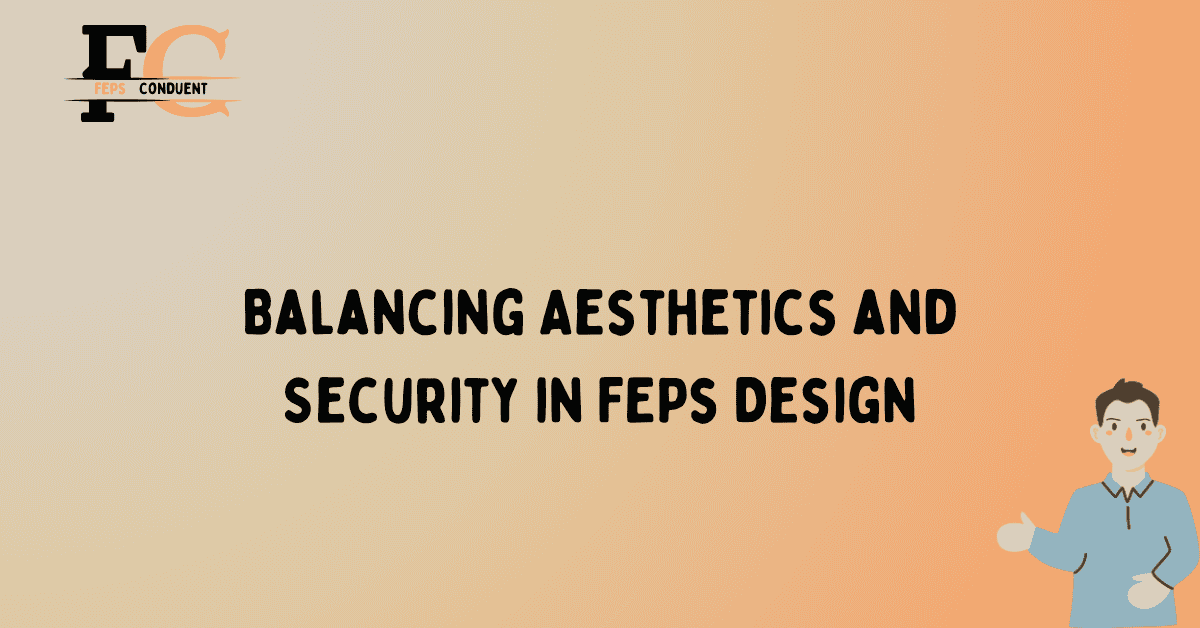Balancing Aesthetics and Security in FEPs Design

When it comes to designing Front-end Performance (FEP) solutions, finding the perfect balance between aesthetics and security is crucial. The visual appeal of a website or application plays a significant role in attracting and engaging users. However, it is equally important to prioritize security measures to protect sensitive user data and prevent potential threats.
In today’s digital landscape, where cyberattacks are becoming increasingly sophisticated, FEP designers must constantly adapt and evolve their strategies. While focusing on creating visually stunning interfaces, they need to implement robust security measures to ensure a seamless and protected user experience. By striking the right balance between aesthetics and security, FEP designers can create innovative and captivating designs that inspire trust and confidence in users.
The Importance of Balancing Aesthetics and Security in Front-end Performance
When it comes to designing Front-end Performance (FEP) solutions, finding the perfect balance between aesthetics and security is crucial. The visual appeal of a website or application plays a significant role in attracting and engaging users. However, it is equally important to prioritize security measures to protect sensitive user data and prevent potential threats.
The Role of Aesthetics in User Engagement
In today’s digital landscape, where competition is fierce, the visual appeal of a website or application can make or break its success. Aesthetics play a vital role in capturing users’ attention and keeping them engaged. A well-designed interface with appealing colors, intuitive layouts, and visually pleasing elements can create a positive first impression and encourage users to explore further.
Furthermore, an aesthetically pleasing design enhances user experience by providing a seamless and intuitive navigation flow. It helps users easily find the information or features they are looking for, resulting in increased satisfaction and reduced frustration.
The Significance of Security in Protecting User Data
While aesthetics are essential, they should never come at the expense of security. With the rising threat of cyberattacks and data breaches, ensuring the protection of sensitive user data is of utmost importance. Any compromise in security can lead to severe consequences, including loss of trust, financial damage, and legal liabilities.
Implementing robust security measures, such as encryption, secure authentication protocols, and regular vulnerability assessments, is crucial to safeguard user information. By prioritizing security, FEP designers demonstrate their commitment to user privacy and build trust with their audience.
The Need for Constant Adaptation and Evolution
In today’s rapidly evolving digital landscape, cyberattacks are becoming increasingly sophisticated. FEP designers must constantly adapt and evolve their strategies to stay one step ahead of potential threats. This includes staying updated with the latest security practices and implementing them into their designs.
By regularly reviewing and enhancing security measures, FEP designers can mitigate the risks posed by emerging threats. They can ensure that their designs are resilient to attacks and provide a secure environment for users to interact with.
Striking the Right Balance for a Captivating User Experience
While aesthetics and security may seem like conflicting priorities, striking the right balance between the two is essential. By integrating robust security measures into visually stunning interfaces, FEP designers can create innovative and captivating designs that inspire trust and confidence in users.
By prioritizing both aesthetics and security, FEP designers can provide a seamless and protected user experience. Users can enjoy the visual appeal of the interface while feeling confident that their data is secure. This balance ultimately leads to increased user engagement, satisfaction, and loyalty.
FAQs
What is the importance of balancing aesthetics and security in FEPs design?
When designing FEPs (Front End Platforms), it is crucial to balance aesthetics and security. Aesthetics play a significant role in attracting users and providing an enjoyable user experience. On the other hand, security ensures the protection of sensitive data and prevents unauthorized access. By finding the right balance between the two, FEPs can deliver visually appealing interfaces while maintaining robust security measures.
How can aesthetics enhance the user experience in FEPs design?
Aesthetics in FEPs design can greatly enhance the user experience. By using visually pleasing elements such as attractive colors, typography, and graphics, FEPs can create a positive first impression on users. Well-designed interfaces also improve usability and navigation, making it easier for users to interact with the platform.
What are the potential risks of neglecting security in FEPs design?
Neglecting security in FEPs design can lead to various risks. Without proper security measures, sensitive user information can be vulnerable to hacking, data breaches, and unauthorized access. This can result in severe consequences such as financial loss, damage to the brand’s reputation, and legal implications.
How can security be integrated into the aesthetics of FEPs design?
Integrating security into the aesthetics of FEPs design involves implementing security features without compromising the visual appeal. This can be achieved by using secure coding practices, incorporating encryption methods, and implementing user authentication systems that are seamlessly integrated into the design. By doing so, the security measures become an integral part of the overall aesthetics of the platform.
What are some best practices for balancing aesthetics and security in FEPs design?
Some best practices for balancing aesthetics and security in FEPs design include conducting regular security audits, staying updated with the latest security protocols, implementing strong password policies, and providing clear instructions for users regarding security measures. It is also essential to involve both designers and security experts in the design process to ensure a holistic approach.
How can user feedback help in improving the balance between aesthetics and security in FEPs design?
User feedback is a valuable resource for improving the balance between aesthetics and security in FEPs design. By actively seeking and listening to user feedback, designers and developers can gain insights into how users perceive the aesthetics and security of the platform. This feedback can then be used to make necessary adjustments and improvements to enhance both the visual appeal and security measures of the FEPs design.






